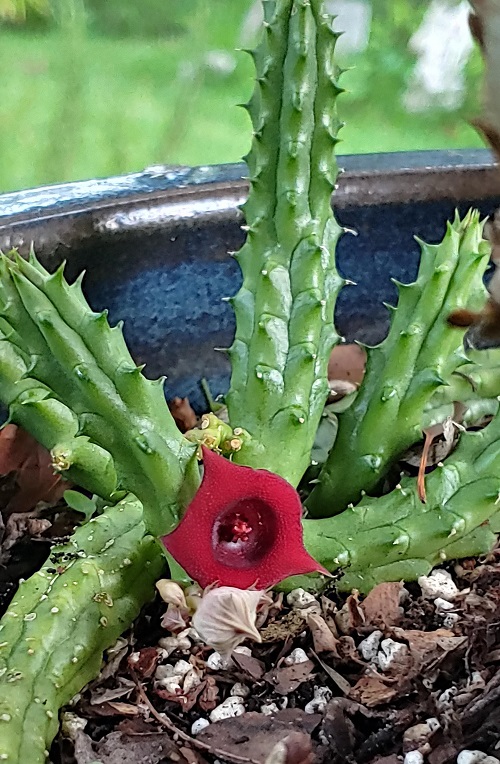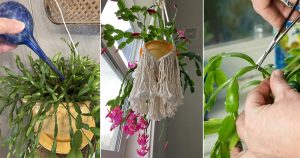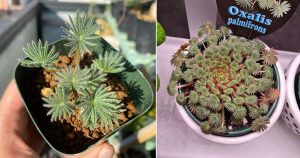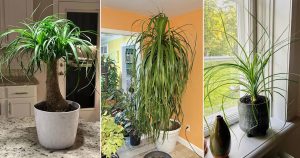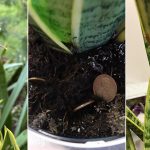Check out our easy-to-follow Huernia Macrocarpa Care and Growing Guide, which will help you nurture your Starfish Flower effortlessly!
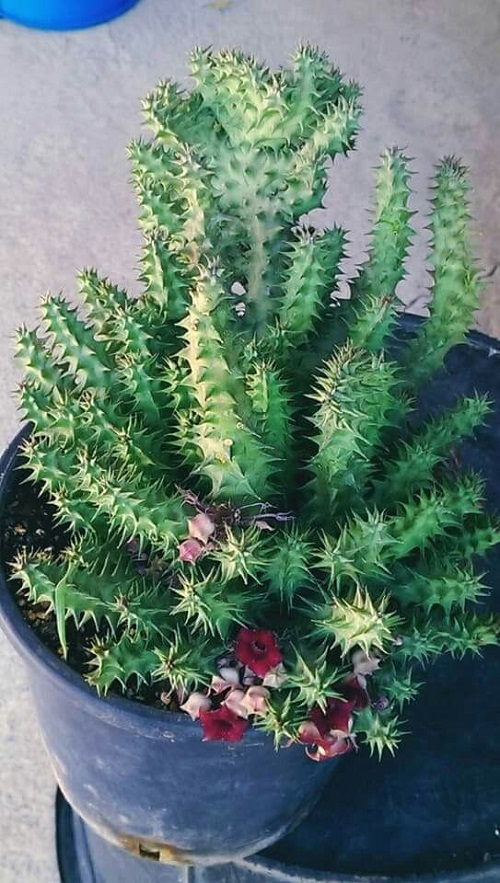
Popular as the Starfish Flower, Huernia Macrocarpa is an eye-catching succulent perfect for both indoor and outdoor settings. The best part is it doesn’t require a lot to thrive!
Check Out the Finest Types of Astrophytum Asterias
Huernia Macrocarpa – Key Facts
| Name | Huernia Macrocarpa |
| Common Names | Carrion plant, Dragon, Stapelia Starfish Flower |
| Origin | It is native to Saudi Arabia |
| Height | 6 inches tall and 12 inches wide |
| Indoor/ Outdoor | Both |
| Soil | Well-drained soil |
| Temperature | 60°F to 85°F |
| Watering | Not much but when the soil dry out completely |
| Sunlight | 5-6 hours of indirect sunlight |
| Flowers | Dark pink star-shaped flowers |
| Blooming Season | From July to October |
Huernia Macrocarpa Information
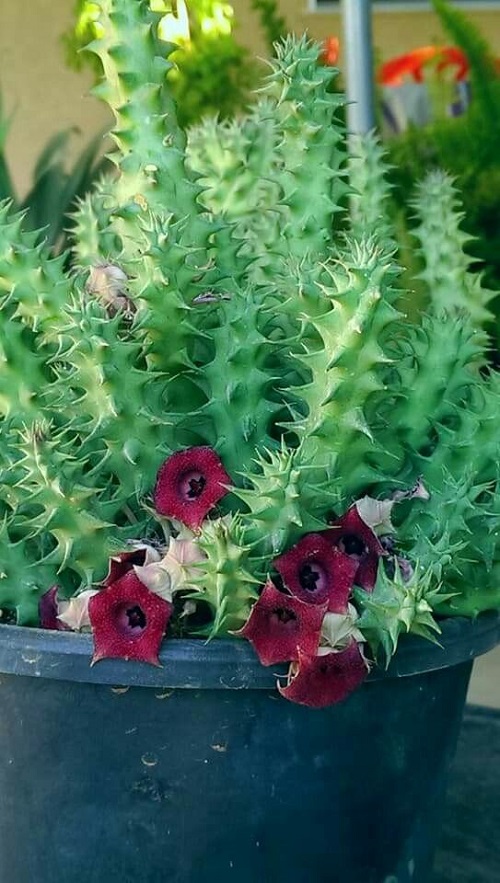
Thriving in the lofty mountains of southwest Saudi Arabia, this plant has the potential to aid diabetes treatment. It belongs to the same botanical family as milkweed and is aptly nicknamed the “Dragon Flower.” This name stems from its dragon-head-like appearance, complete with intricate patterns adorning its petals.
It can reach up to 6 inches in height and spread out to about 12 inches wide. Plus, this succulent features spiny, triangular-shaped leaves on stems that may exhibit a green or brown hue, often adorned with spots or lines for camouflage in its natural habitat.
During the warmer months of summer and fall, the Huernia Macrocarpa puts on a show with its star-shaped flowers, blooming in shades of yellow or orange. These flowers aren’t just a feast for the eyes; they emit a pleasant fragrance, which is a clever strategy to attract flies and other insects, aiding in the pollination process.
Huernia Macrocarpa Pot Size
When selecting a pot for Huernia macrocarpa, small and snug is the way to go! This low-maintenance succulent thrives best in a compact environment, ideally in a pot about 4-5 inches in diameter with enough drainage holes. That way, it’ll have adequate drainage and enough room for the roots to grow. So, pick a cute little pot to show off this beautiful plant!
Requirements for Growing Huernia Macrocarpa
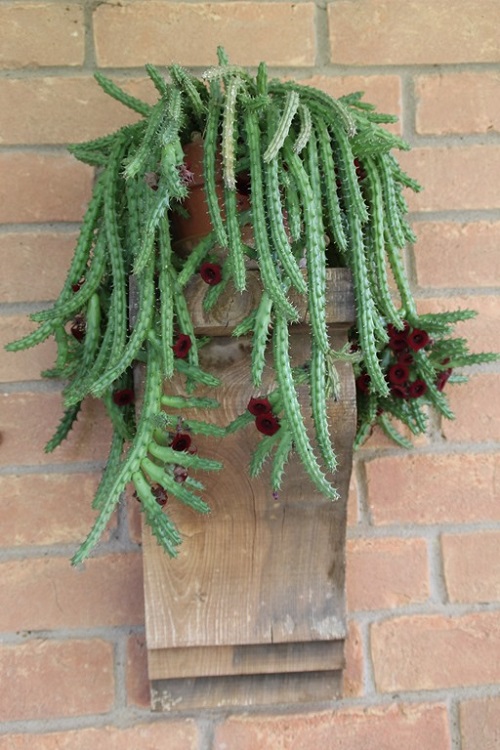
Sunlight
Huernia Macrocarpa loves sunlight but not too much! Aim for about 5-6 hours of indirect sunlight each day to keep it happy and blooming. But watch out for direct sunlight, especially during the hottest part of the day – it can burn its leaves!
If you’re growing it indoors, find a sunny window where it can soak up plenty of natural light. Here’s a tip: Morning sunlight for 2-3 hours is perfect for its growth.
Soil
This plant needs soil that drains well to stay healthy. Use a special mix for cacti or succulents, with sand or perlite mixed in. It should feel loose and crumbly, letting extra water flow away easily. Avoid heavy, clay-based soil that traps too much water.
Watering
Huernia Macrocarpa doesn’t need much water – it’s a survivor! Give it a drink once every two weeks during the growing season, and cut back even more in winter. Let the soil dry out completely between waterings to avoid drowning its roots.
Temperature
Keep things warm and cozy for this plant, between 60°F to 85°F. It doesn’t like it too chilly, so steer clear of temperatures below 50°F or sudden drops. Indoors, keep it away from cold drafts or air vents that can give it a chill.
Huernia Macrocarpa Care
Fertilizer
Huernia Macrocarpa isn’t picky about food. You don’t need to feed it often, but a nice treat is to give it diluted succulent or cactus fertilizer every few months during spring and summer.
Skip feeding it during winter when it’s taking a break. And be careful not to overdo it – too much fertilizer can hurt its roots.
Pruning
This plant doesn’t need much pruning, but if you want it to grow bushier, you can snip off the tips of its stems. If you spot any dead or damaged bits, trim them away with clean scissors to keep them healthy.
After it’s done blooming, a little trim can encourage new growth.
Pests and Diseases
Luckily, Huernia Macrocarpa is pretty tough against pests and diseases. But sometimes, pesky bugs like mealybugs or spider mites might pay it a visit. Keep an eye out for any signs of trouble, like yellowing leaves or weird white stuff on the stems.
If you spot anything, treat it with a solution of neem oil or insecticidal soap. And remember, don’t drown it – overwatering can lead to nasty fungal diseases like root rot. If you notice any signs of disease, cut off the affected parts and treat the plant with a fungicide if needed.

